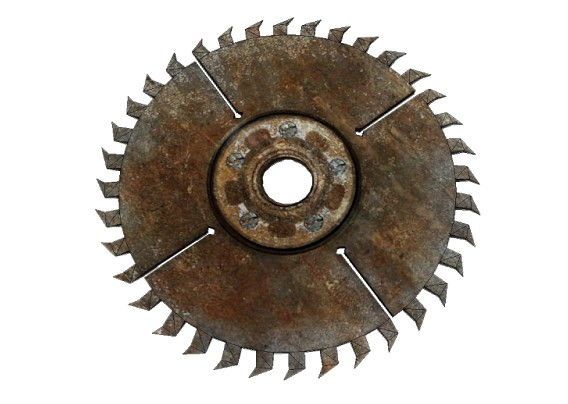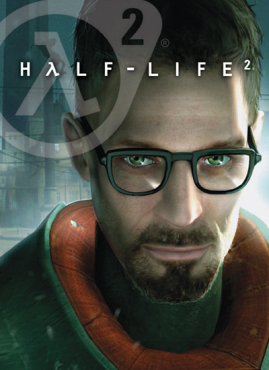Beyond Bullets: How Half-Life 2's Gravity Gun Revolutionized Game Design Half-Life 2.

Half-Life 2. Even the name conjures images of a dystopian City 17, Combine overlords, and the silent, ever-determined Gordon Freeman. But beyond the compelling narrative and groundbreaking graphics (for its time, anyway), Half-Life 2's enduring legacy lies in its innovative use of physics, specifically, the introduction of the gravity gun. As a seasoned PC gamer, I've seen countless titles attempt to leverage physics for gameplay, but Half-Life 2 uniquely integrated it into its core DNA, transforming how we interact with the game world and forever changing the FPS landscape. This isn't just about chucking boxes; it's about emergent gameplay, environmental storytelling, and a complete rethinking of combat and puzzle design.
Ravenholm: A Symphony of Sawblades and Screams
If there's one location in Half-Life 2 that exemplifies the genius of the gravity gun, it's Ravenholm. This derelict mining town, overrun by headcrab zombies and zealously "protected" by Father Grigori, is a masterclass in environmental horror. Ammunition is scarce, and the narrow, claustrophobic environments are teeming with enemies. But here, the gravity gun isn't just a weapon; it's a lifeline.
The level design is meticulously crafted to encourage improvisation. Scattered throughout Ravenholm are saw blades, propane tanks, and various pieces of debris, all primed to be weaponized. Hearing the screech of a zombie horde approaching, you frantically search for anything you can hurl their way. A well-aimed saw blade can cleave through multiple enemies, while a propane tank offers a satisfyingly explosive solution.

Alt text: A screenshot capturing the player using the gravity gun to launch a saw blade at a zombie in Ravenholm. Focus on dynamic motion blur and the grim, dimly lit atmosphere of the mine.
The physics engine adds a layer of tension that conventional shooters simply can't replicate. A missed shot with the gravity gun isn't just a waste of ammo; it could leave you vulnerable and surrounded. The groaning and clattering of debris, combined with the constant zombie moans, creates an atmosphere of unrelenting dread. Ravenholm isn't just scary because of its enemies; it's scary because the environment itself is hostile, and you're forced to use it to survive. This chapter masterfully demonstrates Half-Life 2's innovative integration of puzzle-solving, combat, and storytelling within the framework of a physics-driven world. The gravity gun allows you to clear pathways blocked by debris, trigger traps against your enemies, and even create makeshift defenses.
The Citadel: Physics as a Weapon of Rebellion
The Citadel, the imposing headquarters of the Combine in City 17, presents a stark contrast to the griminess of Ravenholm. Here, the environment is sterile, angular, and utterly alien. And it's here that the gravity gun receives a significant upgrade, transforming into the "supercharged" version.
The supercharged gravity gun is more than just a weapon; it's a tool of rebellion. It allows you to dismantle Combine technology and turn their own creations against them. The iconic sequences involving energy orbs are a perfect example. These glowing blue spheres of energy, typically used to power Combine machinery, become potent weapons in Gordon's hands.

Alt text: A screenshot of the player using the supercharged gravity gun to manipulate an energy orb in the Citadel. Showcase the glowing blue energy effects and the sterile Combine architecture. Aim for a high-resolution image with sharp details and dynamic lighting.
You use the supercharged gravity gun to grab these orbs, solve puzzles involving energy transfer, and ultimately, unleash them upon Combine forces. The contrast between the vibrant blue energy and the cold, sterile architecture of the Citadel is striking, visually reinforcing the idea of Gordon disrupting the Combine's control. This highlights how Half-Life 2 turned its physics engine into a vehicle for narrative, making the player's interactions with the environment both meaningful and impactful.
Level Design: Physics as Architecture
The inclusion of the gravity gun fundamentally shaped the level design of Half-Life 2. While the game maintains a linear narrative, the levels are often designed with a degree of openness that encourages experimentation. The gravity gun doesn't just add to existing level designs; it dictates them.
Take, for example, the coastal highway section. Here, you're tasked with navigating a series of checkpoints while fending off Combine attacks. The environment is littered with vehicles, debris, and other objects that can be used to your advantage. You might use a car as cover, or launch barrels at pursuing enemies. The key is that the game allows you to approach these encounters in a variety of ways, fostering a sense of player agency.

Alt text: A screenshot of a physics-based puzzle in a non-combat environment, such as using debris to create a bridge or activate a mechanism. The image should clearly demonstrate the puzzle's solution and the player's interaction with the environment. Focus on composition and clear visual communication of the puzzle mechanic.
Another example is the traversal puzzle of using planks to cross a broken bridge or operating makeshift elevators by adding weights to them. These moments slow down the pace of combat but provide a rewarding sense of problem-solving, where observation, experimentation, and manipulation of the environment are key. This seamless integration of puzzles, combat, and environmental interaction is what sets Half-Life 2 apart.
Beyond Gimmicks: Physics as Core Gameplay
While other games have utilized physics-based gameplay to varying degrees of success, Half-Life 2 stands apart because it integrated physics into its core gameplay loop, narrative, and overall player experience. Crysis, for instance, allowed players to hurl enemies around with super strength, and Red Faction: Guerrilla let you demolish entire buildings. But these mechanics often felt like standalone gimmicks, separate from the main gameplay.
Half-Life 2, on the other hand, made physics an integral part of everything you did. The gravity gun wasn't just a weapon; it was a tool for exploration, puzzle-solving, and even storytelling. It fundamentally changed how players interacted with the game world, fostering a sense of agency and creativity that is still unmatched today. It's not just about seeing physics in action; it's about feeling them and using them to overcome challenges.
Conclusion: A Legacy of Innovation
Half-Life 2's gravity gun wasn't just a cool weapon; it was a revolution. It transformed player interaction with the environment, creating emergent gameplay scenarios and adding a new layer of depth to the FPS genre. From the terrifying depths of Ravenholm to the sterile heights of the Citadel, the gravity gun redefined how we experience video games. Its influence can still be felt in modern titles, but few have managed to replicate the seamless integration and sheer brilliance of Half-Life 2's physics-based gameplay. This wasn't just a gimmick; it was a fundamental shift in game design, and it cemented Half-Life 2's place as a true masterpiece.